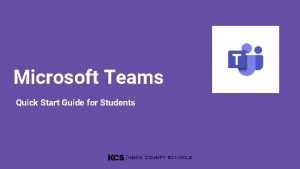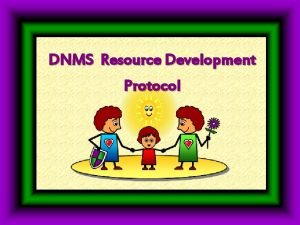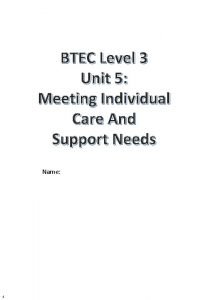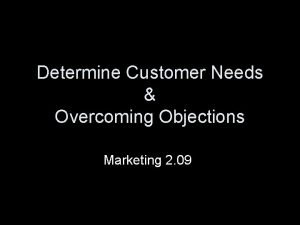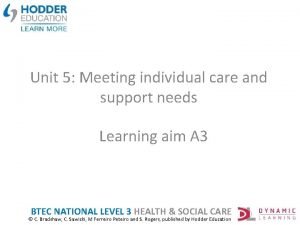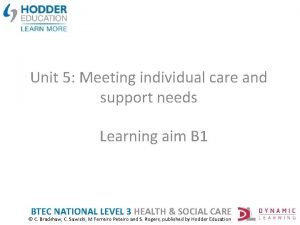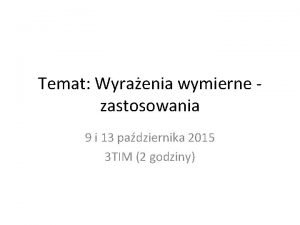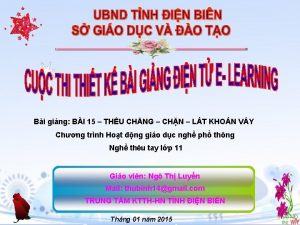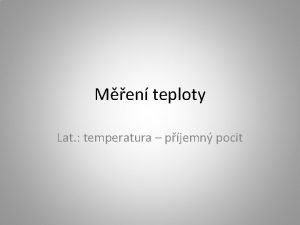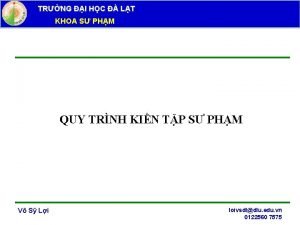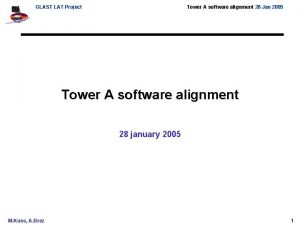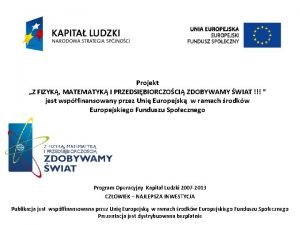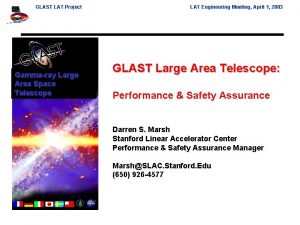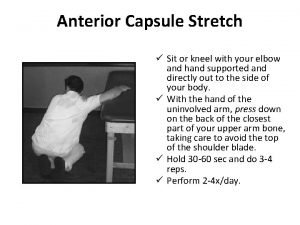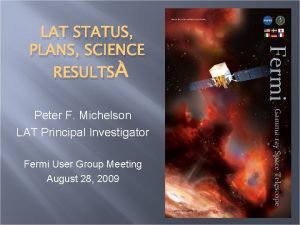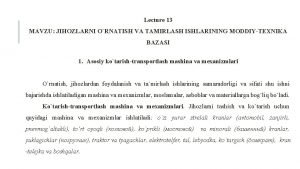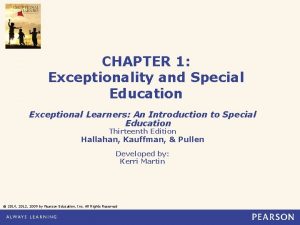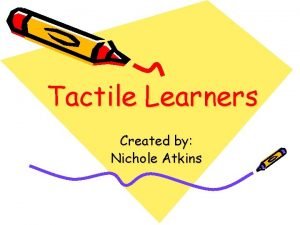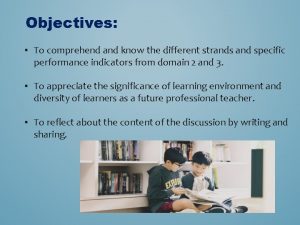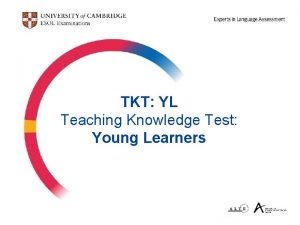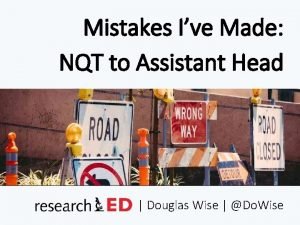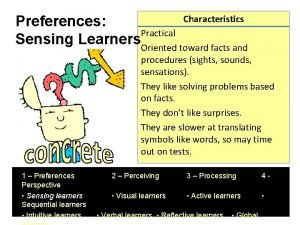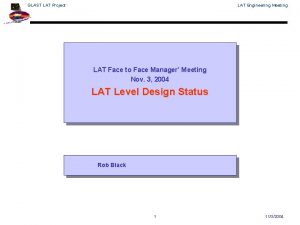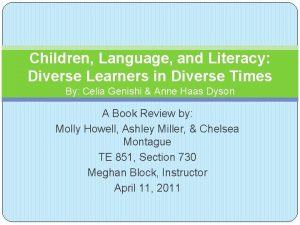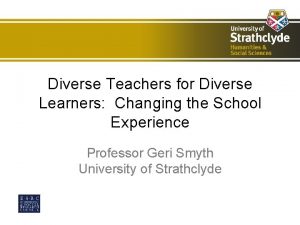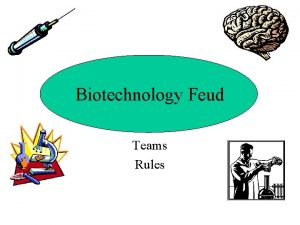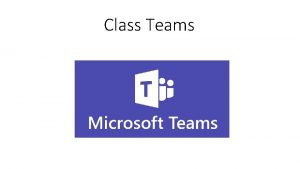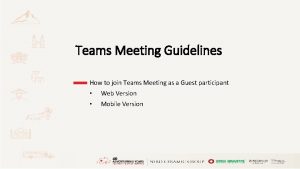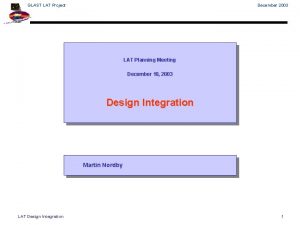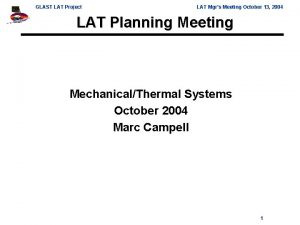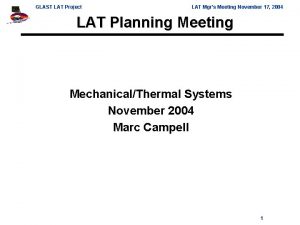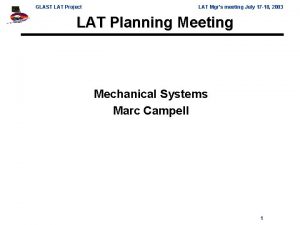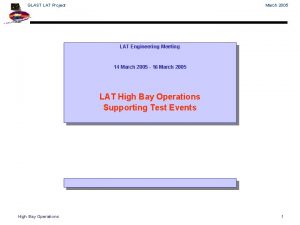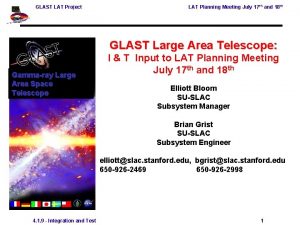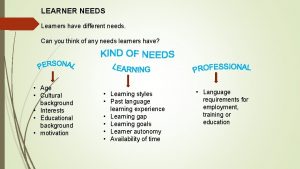Meeting the Needs of Diverse Learners LAT teams




























































- Slides: 60

Meeting the Needs of Diverse Learners: • • LAT teams COST teams SST teams IEP teams

We innovate and transform learning to inspire excellence. Language Appraisal Team: Language Delays v. Learning Delays

“The Language Appraisal Team (LAT) ensures that appropriate instruction, support and intervention strategies are provided to accelerate the language progress of all English Learners (ELs) including Long Term English Learners (LTELs) and avoid over-identification for special education services. The LAT also ensures that Reclassified Fluent English Proficient (RFEP) students continue to make progress and achieve academic proficiency after reclassification. ” Source: LAT Handbook We innovate and transform learning to inspire excellence. Purpose of the LAT

3 Tiered Approach to Intervention Adapted from Sprague & Walker, 2004 Targeted/ Intensive (3 -5%) (High-risk students) Individual Interventions *Intensive Interventions *Increased Frequency and Duration *SST Meetings *Additional Follow-up SST Meetings *Case Management Selected (At-risk Students) Classroom, Family, & Small Group Strategies (10 -20% of students) Universal (All Students) School-wide, Culturally Relevant Systems of Support (75 -85% of students) *COST Team Meetings *Individual Student Plans *Instructional Supports *Documentation & Monitoring *Incentive Programs *Clear Expectations *Positive School Climate *Instructional program *LAT Team Meetings * Asset Building

LAT Referral Process: We innovate and transform learning to inspire excellence. Tier 1 Intervention Source: LAT Handbook 2013 -2014

• Monitoring the Academic and Linguistic Progress of English Learners • Recommending Interventions for English Learners (preferably before COST/SST referral) • Reviewing Progress of ELs in Meeting Reclassification Criteria • Monitoring Progress of RFEPs and Recommending Interventions • Providing Guidance for ELD Setting and Instructional Strategies for LTELs We innovate and transform learning to inspire excellence. LAT Monitoring Functions

LAT Membership 7

LAT Membership Role and Responsibilities of Parent/Legal Guardian • Advocate on behalf of the student • Provide input regarding the student’s personal background any additional information about the child that may assist the LAT in making informed decisions, including the student’s language history • Invite additional individuals for support, if desired • Work together with the team to continue to support their child’s progress • NOTE: Due to student confidentiality, the school will only invite the parent/guardian of the student being considered. 8

We innovate and transform learning to inspire excellence. LAT Handbook Resources

We innovate and transform learning to inspire excellence.

LAUSD Students with Disabilities (SWD) 82, 765* % of LAUSD students with disabilities 13% % of students with Specific Learning Disability (SLD) 47% SWD Basic or above on CST English Language Arts (2013) 43% SWD Basic or above on CST Mathematics (2013) 38% SWD graduated with a high school diploma in 2011 -12 49% * Increase of 550 students from 2011 -12 Data based on CASEMIS and LAUSD My. Data We innovate and transform learning to inspire excellence. Who are our students with disabilities?

English Learners in LAUSD Total Students with Disabilities 655, 494 82, 765 Total ELs 170, 797 Total EL SWD 36, 936 26% 45%* *More than 90% of LAUSD EL SWD are LTELs 2011 -12

We innovate and transform learning to inspire excellence.

• Students with disabilities can still learn language • The disability may impact the language learning, but they still need access to language development We innovate and transform learning to inspire excellence. Disabilities & Language

We innovate and transform learning to inspire excellence.

We innovate and transform learning to inspire excellence.

DEFINING THE ACRONYMS COST Coordination of Services Team

SPECTRUM OF INTERVENTION Attendance Supports Attitude Successful Student Academic Supports behavior social-emotional Supports

3 Tiered Approach to Intervention Adapted from Sprague & Walker, 2004 Targeted/ Intensive (3 -5%) (High-risk students) Individual Interventions *Intensive Interventions *Increased Frequency and Duration *SST Meetings *Additional Follow-up SST Meetings *Case Management Selected (At-risk Students) Classroom, Family, & Small Group Strategies *Team Meetings (COST) *Individual Student Plans *Instructional Supports *Documentation & Monitoring (10 -20% of students) Universal (All Students) School-wide, Culturally Relevant Systems of Support (75 -85% of students) *Incentive Programs *Clear Expectations *Positive School Climate *Instructional program * Asset Building

HOW SHOULD STUDENTS BE IDENTIFIED? Students needing support REFERRAL Teacher Parents Support Staff Administration DATA REVIEW Attendance Achievement Attitude (behavior, social-emotional) COST Team reviews data and referrals and makes decisions LAUSD Multidisciplinary Team Support (09/09)

BASIC SCHOOL MODEL SCHOOL-WIDE C*O*S*T Members come from representatives from ALL programs at school School-wide Data Collection Monitoring Evaluation REFERRALS Makes Decisions SST meetings are scheduled after classroom interventions unsuccessful SST Core Team members & Supporting Members that attend as needed Intensive Support

Large School Team Structure SCHOOL-WIDE COST 1 Small number of team members COST 2 Small number of team members COST 3 Small number of team members SST meetings are scheduled ONLY by COST team – usually after interventions unsuccessful SST COST Team members & Supporting Members that attend as needed

WHO MIGHT BE ON THE COST ? PRINCIPAL ASSISTANT PRINCIPALS LITERACY & MATH COACHES PSA TEACHERS COUNSELOR INTRVNTN COORD. BRIDGE COORD. COST Team reviews data and/or referrals and makes decisions DEAN PSYCH. PSW NURSE EL COORD. TITLE I COORD. LAUSD Multidisciplinary Team Support (3/08)

WHAT IS THE PURPOSE OF COST AND SST? Problem solving Linkage & Connection Develops an action plan Delivery of services Development of resources

WHAT COST AND SST ARE NOT: COST and SST are not: A way to get students into Special Education Parent Conferences

FUNCTIONS OF COST SCHOOL-WIDE EVALUATION data review, school-wide problems, gap analysis IDENTIFICATION OF STUDENTS data, screening, anecdotal evidence, referrals INTERVENTIONS triage, referral to program/person, strategies MONITORING/DOCUMENTATION case management, data collection, evaluation LAUSD Multidisciplinary Team Support (3/08)

WHAT DOES THE COST DO REGULARLY Reviews data and screen referrals Makes decisions and develop action plans around student needs (triage) Respond to persons making referrals Monitors progress LAUSD Multidisciplinary Team Support (09/09)

AS THE CHALLENGE ESCALATES, THE NEED FOR TEAMWORK ELEVATES. JOHN C. MAXWELL LAUSD Multidisciplinary Team Support)

3 Tiered Approach to Intervention Adapted from Sprague & Walker, 2004 Targeted/ Intensive (3 -5%) (High-risk students) Individual Interventions *Intensive Interventions *Increased Frequency and Duration *SST Meetings *Additional Follow-up SST Meetings *Case Management Selected (At-risk Students) Classroom, Family, & Small Group Strategies *Team Meetings (COST) *Individual Student Plans *Instructional Supports *Documentation & Monitoring (10 -20% of students) Universal (All Students) School-wide, Culturally Relevant Systems of Support (75 -85% of students) *Incentive Programs *Clear Expectations *Positive School Climate *Instructional program * Asset Building

DEFINING THE ACRONYMS COST Coordination of Services Team SST Student Success Team

WHAT IS A STUDENT SUCCESS TEAM? A school site team should include the parent and student in a positive problem solving intervention process, as well as teachers and staff.

STUDENT SUCCESS TEAM FOR STUDENTS NEEDING MORE INTENSIVE SUPPORT Develop an individualized plan of support Have scheduled follow-up meetings (See Worksheet)

WHO IS ON THE TEAM. . CORE TEAM MEMBERS Attend all SST meetings Support/manage process outside the SST meetings ADDITIONAL TEAM MEMBERS Invited to attend specific SSTs § Referring Teacher § Coordinators § Itinerant Staff

HOW SHOULD STUDENTS BE IDENTIFIED? Students needing support REFERRAL DATA REVIEW Teacher Parents Support Staff Administration Attendance Achievement Attitude (behavior, social-emotional) SST Coordination Core Team reviews data and referrals and makes decisions Support Teacher Hold SST Often a COST process Try intervention

TEAM ROLES Facilitator-Directs the meeting, stays positive Recorder-Responsible for group memory It is a good idea to Time Keeper-Maintains flow of meeting rotate roles to strengthen all Messenger – Informs referring party & team members’ others needing information about understanding of decisions made and actions planned the group process. Team Member (ALL)-Positive, unselfish contributor, takes on actions

It’s all about the student Strengths Information Modifications Concerns Strategies Actions THE SST MEETING PROCESS

WHAT HAPPENS AT A SST MEETING? Team meets for approximately 30 -45 min. Specific Roles and Protocols are followed Team Discusses: - Strengths - History - Present Modifications List Concerns, Brainstorm Interventions Develop an Action Plan Schedule Follow-Up Meeting

STUDENT INFORMATION Try to use process for gathering information: Health Home (Who lives there, Amount of TV, Bedtime, Routines) Attendance (History and Current) Academics (History-use cum and comments, Current data) Behavior (classroom, yard, learning styles, home) Other Information

STUDENT MODIFICATIONS What has been tried already both inside and outside of classroom Make sure to indicate: § Success § Frequency § Length of time attempted § Data if available

WHAT HAPPENS AFTER THE MEETING? The Plan is put into action Classroom teacher implements new strategies Parent begins new routines Student takes part in actions Supporting Staff provide services EVERYONE DOCUMENTS WHAT THEY ARE DOING

WHAT HAPPENS AFTER THE MEETING? FOLLOW UP MEETINGS Usually within 4 -6 weeks of last meeting Team gathers to present data from specific actions Everyone evaluates: § Fidelity and consistency § Progress of student

POSITIVE OUTCOMES OF HAVING SST Increased parent involvement Improved teacher instruction Builds a community within school A Plan to support students and families Increased student achievement Prevent problems from escalating into something more difficult to deal with.

Least Restrictive Environment (LRE) l The law states: l Students must be educated in the general curriculum and/or l Participate in activities with other students who are not disabled l To the maximum extent appropriate l Include any necessary accommodations, modifications, and/or supports to involve student in general education curriculum l Explain how often student will not participate in general education curriculum The IEP and You, p. 4 -5

Least Restrictive Environment (LRE) l Continuum of placement options l General education classroom with in-class special education support (RSP) l General education classroom with out-of-class special education support l Special education classroom (SDP) l Special Education Schools / Career and Vocational Centers l Nonpublic school (NPS) l Home/Hospital l State residential school The IEP and You, p. 4 -5

Frequency of IEP Team Meetings IEP Timelines • 60 days after parent signature and consent on Assessment Plan • 30 days after parent requests l Initial l Annual District who are receiving special Three-year education services l • 30 days for students new to the • At a minimum of once per year

Parent Notification of IEP Team Meeting l l 10 days prior to IEP meeting Date, time, & location Parents may: l Attend, reschedule or consent to proceed with the IEP in their absence l Request an interpreter l Request copies of assessment reports before the IEP meeting l Ask that independent education evaluation (IEE) be considered l Sign & return notification form to school Purpose Participants

Before the IEP Team Meeting l l l Look at recent information about your child’s progress Review your child’s current IEP Go over important information that you want to share at the IEP meeting Give copies to the school of any recent private evaluation reports you want to share with the IEP team Talk to your child Visit your child’s school and meet with teachers to talk about your child’s progress The IEP and You, p. 2

Before the IEP Team Meeting l l l Write down questions you want to ask, thoughts, and/or concerns Review and return the “Notification to Participate in an IEP Meeting” Fill out a “Parent Request for Reasonable Accommodations” form Review “A Parent’s Guide to Special Education Services (Including Procedural Rights and Safeguards)” Review the “ITP and You” if you have a child 14 years or older School’s staff responsibilities: l Arrange for an interpreter l Invite District IEP team members, as needed l Ensure school staff are prepared and will attend the IEP team meeting The IEP and You, p. 2

During the IEP Team Meeting l l Parents should: l Share information about your child l Ask questions or ask for explanations of special education terms that you do not understand l Help in the design of an educational plan to meet your child’s individual needs IEP document will be developed, reviewed, and/or revised The IEP and You, p. 3

During the IEP Team Meeting Required participants l Parent/guardian l School administrator/designee l Special education teacher l General education teacher Additional participants l Others with knowledge or special expertise about your child l Child, if appropriate l Representatives from outside agencies l Interpreter, if requested Excusal from IEP team meeting, with parent consent The IEP and You, p. 3

Use of an Oral Interpreter l l l Parents are encouraged to: l Introduce yourself to interpreter l Sit next to interpreter l Procedures for using interpreter will be explained l Ask questions when you require clarification l Make notations or write questions Interpreter is communicator of information Role of interpreter is neutral Refrain from sidebar conversations (opinions) Speak one person at a time Maintain eye contact and refer comments to appropriate IEP team member

During the IEP Team Meeting l Distribution of documents: l “The IEP and You” l “A Parent’s Guide to Special Education Services (Including Procedural Rights and Safeguards)” l “The ITP and You”, if your child is 14 years or older The IEP and You, p. 3

During the IEP Team Meeting Sample Agenda l Start-up l l l l Welcome/Introductions Signatures of people present Overview/Purpose of Meeting/Time Constraints Ground Rules Decision Making Process Parent Rights IEP Development l l l l Present Levels of Performance Eligibility Recommend/Establish Goals & Objectives Supports & Services Placement in the LRE Offer of FAPE Consent Next Steps The IEP and You, p. 3

The IEP Document l l l Present levels of performance (PLP) Eligibility for special education services Measurable goals and objectives l Progress reporting Special education services Related services Accommodations/modifications Supplementary aids/supports Delivery of services State/District assessments Master Plan for English language learners Individual Transition Plan Transfer of rights The IEP and You, p. 6 -7

Age of Majority – 18 years l. Parents make decisions about the student’s educational program until age of 18. l. When the student turns 18, educational rights transfer to the student. l. Parents and students must be informed of this transfer of rights. l This is documented on the IEP/ITP at least one year before the student turns 18.

At the Conclusion of the IEP Team Meeting l l Administrator/Administrator designee will: l Summarize decisions l Offer free appropriate public education (FAPE) Parents may: l Consent to IEP l Sign and date OR l May take home IEP to review before signing l Disagree with the IEP l Clarify areas of disagreement and agreement l Try to work out the disagreement l Document comments/concern The IEP and You, p. 8

At the Conclusion of the IEP Team Meeting l Disagreements: l l l Parent may disagree with any part or all of the IEP School staff will again review your rights If you agree with certain sections of IEP, those services can begin with your written consent IMPORTANT! No part of the new IEP will be implemented without your written consent

Options for Disagreement The Dispute Resolution Process l Informal Dispute Resolution l Mediation Only l Due Process If an IEP is not being implemented l File a State Complaint

At the Conclusion of the IEP Team Meeting l l Parents will be: l Provided with a copy of IEP l An offer to translate IEP will be made l Provide Parent Input Survey School will: l Implement IEP or parts you consent to l Distribute copies of IEP l Provide progress towards IEP goals and objectives at site determined reporting periods l Review the IEP at least once a year The IEP and You, p. 8

Parent Resources l l Community Advisory Committee (CAC) l 1 -213 -241 -6701 Complaint Response Unit/Parent Resource Network (CRU/PRN) l 1 -800 -933 -8133 The IEP and You, p. 10 -11
 Technology for diverse learners
Technology for diverse learners Diversity among protoctista
Diversity among protoctista Microsoft teams quick start guide
Microsoft teams quick start guide Webex meetings vs teams
Webex meetings vs teams Alpha press murray
Alpha press murray Strategic gender needs and practical gender needs
Strategic gender needs and practical gender needs Primary needs and secondary needs
Primary needs and secondary needs Types of needs analysis in esp
Types of needs analysis in esp Primary needs and secondary needs
Primary needs and secondary needs Meeting the needs of guests with kindness and goodwill.
Meeting the needs of guests with kindness and goodwill. Individual needs examples
Individual needs examples Developmental needs meeting strategy
Developmental needs meeting strategy Health and social care unit 5 coursework example
Health and social care unit 5 coursework example Methods of meeting customer needs
Methods of meeting customer needs Unit 5 meeting individual care and support needs
Unit 5 meeting individual care and support needs Chapter 10:5 meeting the needs of the elderly
Chapter 10:5 meeting the needs of the elderly Unit 5 meeting individual care and support needs
Unit 5 meeting individual care and support needs Today meeting or today's meeting
Today meeting or today's meeting What is meeting and types of meeting
What is meeting and types of meeting Types of meeting
Types of meeting Today meeting or today's meeting
Today meeting or today's meeting Pierwsza koparka wykonala polowe wykopu w ciagu 6 h
Pierwsza koparka wykonala polowe wykopu w ciagu 6 h Dokumentacja biblioteki szkolnej
Dokumentacja biblioteki szkolnej Zakaz pokazywania dziewczyn do lat 14 w towarzystwie
Zakaz pokazywania dziewczyn do lat 14 w towarzystwie Thêu giáp tỉa
Thêu giáp tỉa Oslo norway latitude
Oslo norway latitude Patrycja i marysia zbieraja znaczki
Patrycja i marysia zbieraja znaczki Medo-lat epistemology
Medo-lat epistemology Local guide program
Local guide program Color 08242005
Color 08242005 Impringement
Impringement định mức hao hụt gạch ốp lát
định mức hao hụt gạch ốp lát Man lat
Man lat Khoa sư phạm đại học đà lạt
Khoa sư phạm đại học đà lạt Thoracodorsal nerve supplies
Thoracodorsal nerve supplies Dors pedis
Dors pedis Lat
Lat Równanie sprzeczne
Równanie sprzeczne Greater sciatic foramen
Greater sciatic foramen Lat assurance
Lat assurance Suyaklarning sinishi va chiqishida birinchi yordam
Suyaklarning sinishi va chiqishida birinchi yordam Lat prayers
Lat prayers Formellt ledarskap
Formellt ledarskap Pelvik grafi
Pelvik grafi Ge lat
Ge lat Uglerodli po'latlar
Uglerodli po'latlar Lat status
Lat status Tà áo năm xưa xanh màu thông đà lạt
Tà áo năm xưa xanh màu thông đà lạt Urnordiska runor
Urnordiska runor Zanjirga ulangan katta po'lat ilgak
Zanjirga ulangan katta po'lat ilgak Visual iconic learners
Visual iconic learners Exceptional learners: an introduction to special education
Exceptional learners: an introduction to special education Tactile learner definition
Tactile learner definition Diversity of learners
Diversity of learners Tkt young learners book
Tkt young learners book Graham nuttall the hidden lives of learners
Graham nuttall the hidden lives of learners Questioning strategies to engage all learners
Questioning strategies to engage all learners Eager leaner
Eager leaner Global learners characteristics
Global learners characteristics Famous person with musical intelligence
Famous person with musical intelligence Language tools
Language tools


